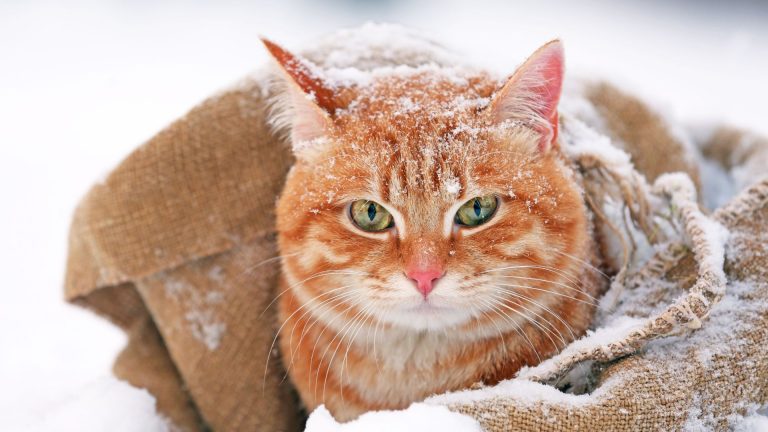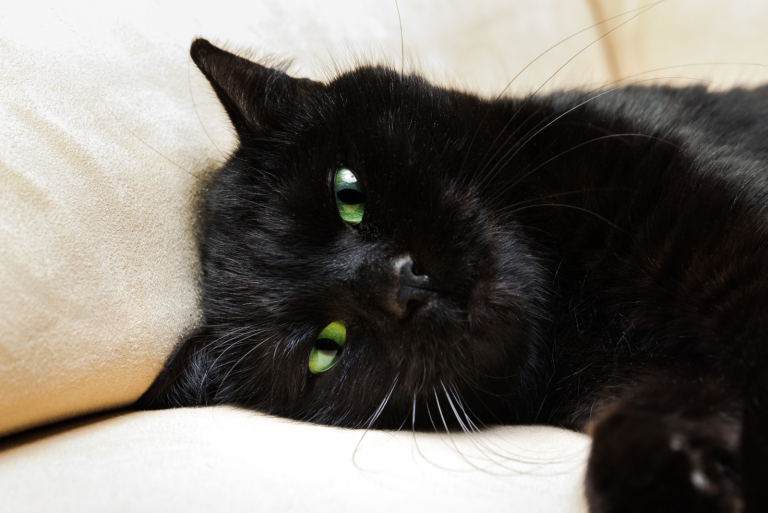Best Tips And Tricks For Getting Rid Of Gnats In Litter Box!
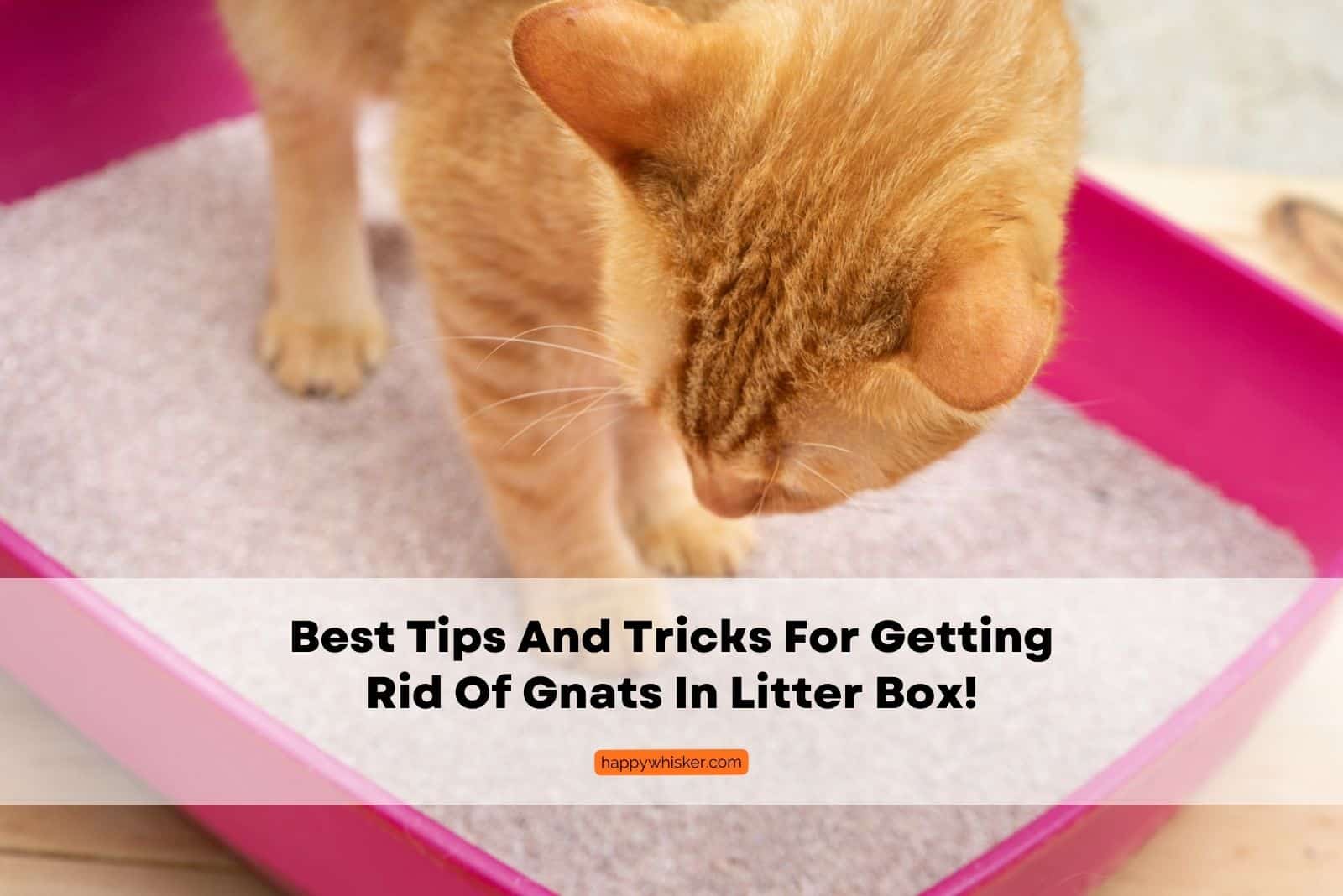
I believe all cat owners have their own system and cleaning schedule when it comes to cleaning their cat’s litter box. However, sometimes new problems occur and we need additional help.
When fleas, mites, gnats, maggots, or other unwanted creatures are found inside the litter box, it will require more effort from you! Get your pest control mindset on, and spray away!
Washing your cat’s litter box, scraping the tray, adding baking soda to the litter, etc. just won’t be enough. Read on and learn some helpful tips and solutions for larvae, fruit fly problems, gnat eggs, or gnats in litter boxes.
Let’s Wipe Out Those Gnats In Litter Box

With some products and simple hacks, or DIY tips and tricks, you can easily combat any unpleasant gnats in litter boxes and keep your home pest-free.
1. Clean Your Cat’s Litter Box Regularly
I believe that every responsible cat owner cleans their cat’s litter box regularly, however, gnats don’t need much to gather and lay eggs in there. First, empty out the entire litter box.
When there’s waste in the cat box for an extended period of time, gnats begin to multiply. Bugs that are attracted to waste in the litter box won’t stay there when there is no waste. Regular clean-ups are extremely helpful!
However, there are always some gnats that linger. Thoroughly clean the litter box! Empty the trash can and scrub the litter box clean with pet-safe detergent and sanitary products.
A thorough wash will eliminate all the germs.
Ideally, your cat’s litter box should be washed and cleaned on a daily basis. Not just the scooping; you should wash it and thoroughly clean it every day.
Gnats reproduce quickly, so thoroughly cleaning the litter box helps break the reproductive cycle and prevent the appearance of new gnats.
2. Clean With Boiling Water

To get rid of any larvae lurking in the litter box, pour hot water straight into it. This can also remove the odor of excrement left by deceased adults or larvae. Gnat traps can also be purchased to eliminate gnat infestations.
3. Consider Changing The Litter Brand
Cats may be choosy about the type of their litter, so switching brands may lower the number of gnats in your home while also making your cat more content with its living conditions.
These small critters are frequently drawn to strong-smelling trash or any strong odor. As a result, if feasible, select a light, unscented variety of litter.
4. Sunny Spot For The Litter Box
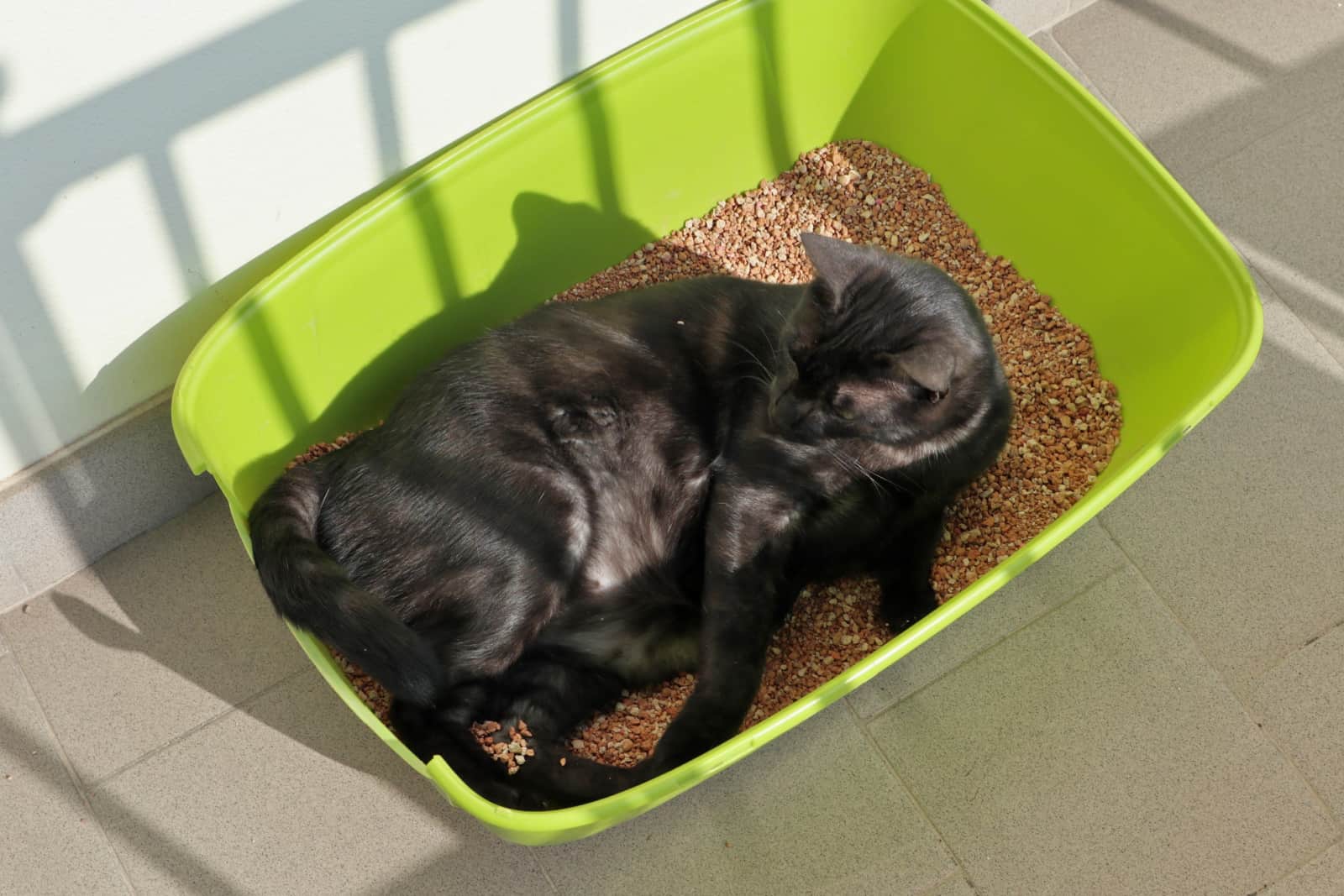
Gnats are drawn to locations with dampness, gloom, and unpleasant scents. Placing your litter box in a more open place with ample sunshine minimizes humidity and helps keep the stench at bay.
Place the litter box in a location that is not shaded by furniture, and keep it free from decaying organic matter such as leaves, grass clippings, mulch, and so on.
5. Set Up Fly Traps
When used properly, fly traps are a very efficient approach for getting rid of gnats in a litter box. The majority of traps have a sticky surface. It might be as basic as a cardboard tube or as complex as a lengthy thread that you unwind.
In any case, the surface is covered in an adhesive that captures gnats the instant they fall on it. The traps may be hung above the litter box, where the gnats cluster. Just make sure your cats can’t reach it.
Cats can’t stop themselves from playing with a dangling toy, and the last thing you want to do is try to clean glue out of your cat’s coat.
6. Use A Spray Insecticide

Spray pesticides, or flying insect killers, are a great way of dealing with gnats in the litter box. However, if you want to try it out, don’t just purchase any spray for bugs.
Find a spray insecticide that focuses on flying insects, as those disperse their ingredients in a fine mist. This allows you to swiftly tackle several gnats with one single application.
By damaging their neurological system and coating the wings, the pesticide swiftly kills gnats in the litter box.
Note: use with caution. These chemicals can easily irritate your cat’s paws if you spritz inside the litter box. Fortunately, there are food-safe sprays that are made of natural oils, which are safe for cats.
7. Set Up Some Bug Zappers
With gnats, using bug zappers might be a great solution or it might fail. On contact, these gadgets employ electrical impulses to kill all flying insects that touch it.
Smaller models, on the other hand, may be more successful. Simply place the zapper somewhere above the litter box, or nearby – just make sure it’s out of your cat’s reach.
8. Humidity Is A No-No
Gnats require a supply of stagnant water to lay their eggs and mature into adults. As a result, remove any unnecessary water source from your home. Every day, change the water in all cat bowls and rinse them with boiling water before refilling.
Keep garbage can lids securely closed, remove the trash on a regular basis, and maintain your plumbing by fixing leaks as soon as possible.
DIY Solutions For Gnat Problems

#1 DIY Insecticide No1
You can use alcohol if you want something more inexpensive and natural. Fill an empty spray bottle with alcohol and begin your battle against gnats and insects in the litter box. The gnats will be killed nearly instantaneously by the alcohol.
Plus, it dries quickly and it is not toxic to your cat if it uses the litter box later. Use a fine mist spray bottle if possible; the spray is more effective against tiny flies when the alcohol particles are finer.
Even if there are no gnats in the immediate vicinity, you can use the alcohol spray for your regular clean-up. After cleaning, you can also spray it to sterilize all surfaces and, with that, keep your cat’s box bacteria-free.
#2 DIY Insecticide No2
Combine two parts water and one part apple cider vinegar in a spray bottle. Spray this on your cat’s litter box (not inside), on the floor outside and around the box, and any other spots in your home where you’ve noticed adult flies.
You can also make a big spray bottle by combining one part of water and 1/4 cup apple cider vinegar in a jar. Fill another sprayer with it to use for spot applications.
#3 DIY Insecticide No3
Mix one cup of vinegar with three cups of water and a spoonful of dish soap until it is not too runny. Fill a spray bottle with this and spray surfaces where you’ve noticed gnats gathering, ensuring they’re fully moist.
Do not use this solution on plants or wood surfaces where grapes will be planted since the vinegar, when applied at full power or undiluted on their leaves, may destroy grapes or grapevines. Allow the solution to dry naturally without rinsing.
#4 DIY Gnat Trap No1
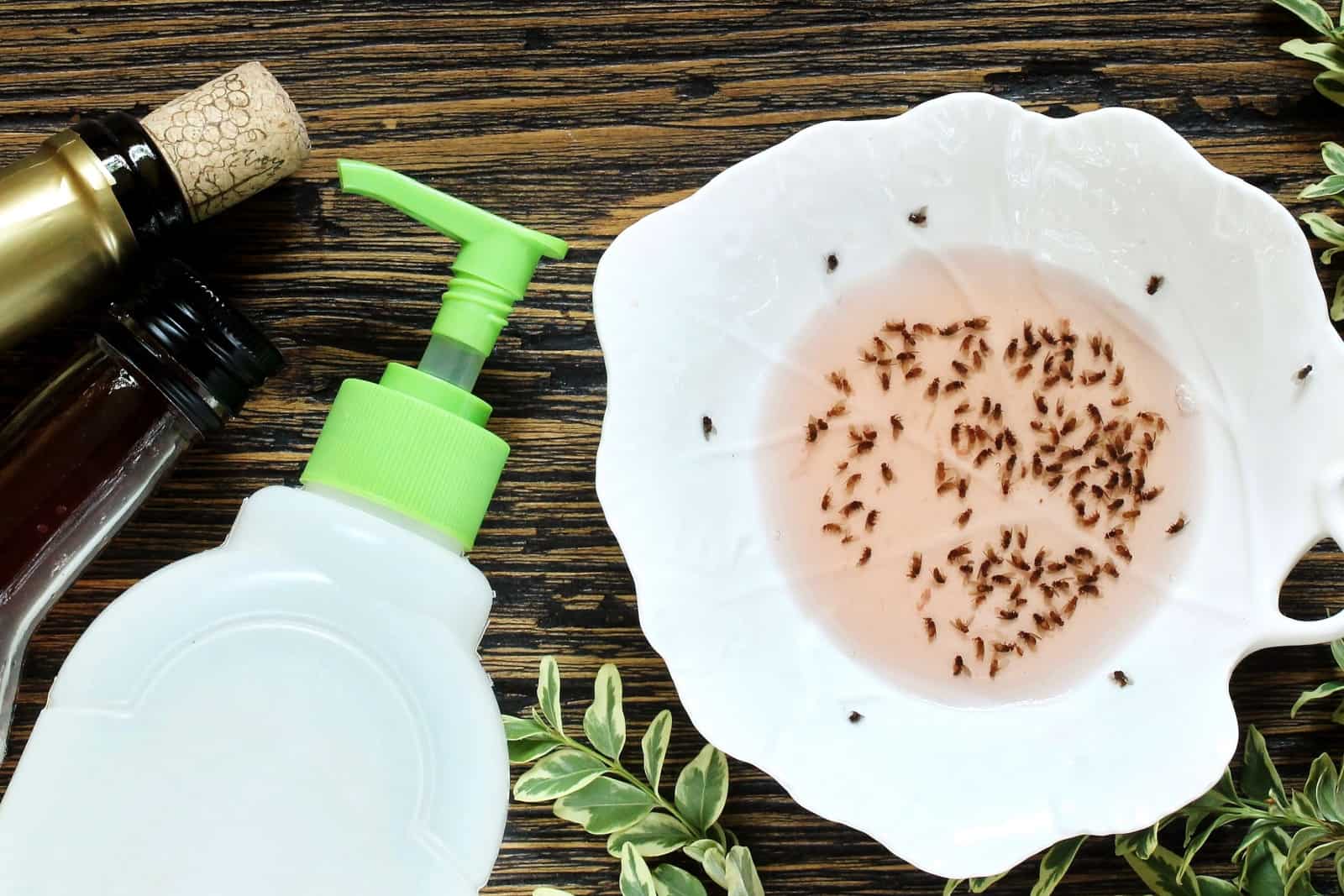
DIY gnat traps might come in handy when you’re in a crisis. They get the task done without spending a lot of money.
The first thing to try involves the use of an old container (e.g. an old bowl that you no longer use), plastic wrap, and apple cider vinegar.
Fill the container halfway with hot water. Then, add a spoonful of sugar, a drop of dish soap, and a couple teaspoons of vinegar. Cover it with a piece of plastic wrap in which you need to poke holes.
Gnats should be drawn in by the aroma of vinegar and sugar. They’ll go in through the little holes, get stuck within the container, and eventually drown!
#5 DIY Gnat Trap No2
Another gnat trap you can try out is the candle trap. You only need a candle and a bowl of warm water (you can add a few drops of liquid dish soap to it too).
Turn off the lights, (so that the only light is coming from the candle) and place the bowl near the litter box, but make sure your cat can’t reach it.
This trap is extra effective; the candle will burn the bugs’ wings if they fly too close to it, and the gnats will also be drawn to the reflection of the flame in the water and will drown once they touch it.
This is especially effective if you’ve put dish soap in the water, which will prevent the gnats from escaping.
#6 DIY Gnat Trap No3
This third trap involves rotting fruit. If you have some decaying fruit that you’ve forgotten about, don’t throw it away.
Instead, put it in a container, similar to the first trap, and seal it with plastic wrap. Make holes in the plastic wrap so the gnats can get inside, and once they do, they won’t be able to escape.
How To Keep Your Litter Box Gnat-Free
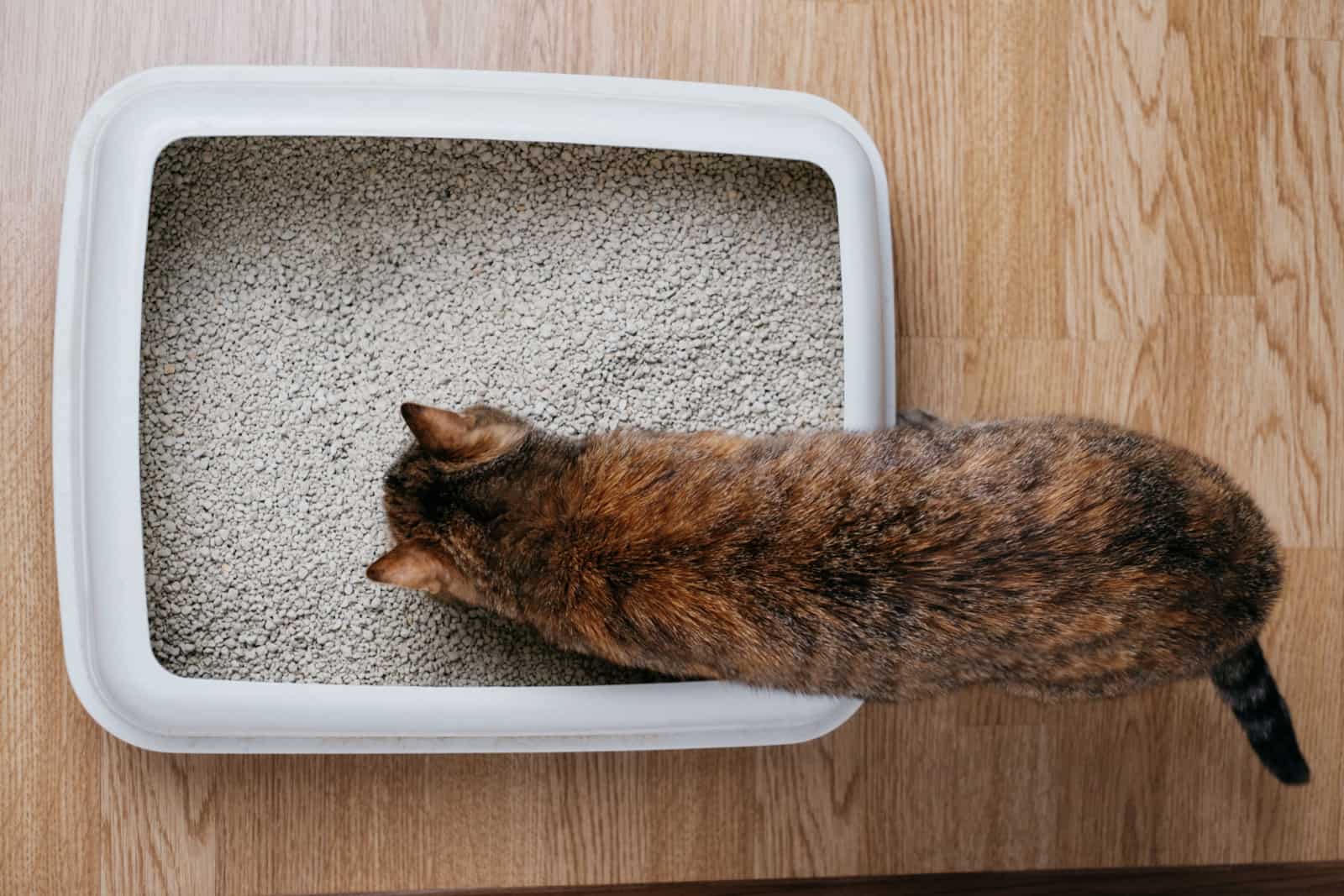
Let’s learn how to keep gnats out of the litter box, now that you know how to get rid of them. Gnats are challenging little bugs that may reappear quickly. These flies find plenty of food and shelter in your cat’s litter box.
Gnats are always attracted to litter boxes, but there are a few things you can do to guarantee that they won’t trouble you or your cat again.
1. Litter Box Location
Gnats, as previously said, enjoy warm and humid conditions. Keep your cat’s litter box away from rooms that are usually very warm. Place the boxes in ventilated rooms with a fan or an air conditioner. Consider purchasing a tiny dehumidifier if you can.
You may place the dehumidifier in a specific area to keep the air as dry (and undesirable to gnats) as possible.
2. Use The Right Amount Of Litter
While most cat owners are unaware of it, they are using far more litter than is necessary. Cats can function very well with only a light coating of litter.
Use less litter; depending on how much litter you usually use, you might even have to reduce the amount of litter by half.
With only a small amount of litter available, you will be forced to wash and refill the box more regularly. Also, less litter means less ground for gnats to lay eggs on.
Gnats and their larvae will be a whole lot easier to get rid of as well. You can read more about it in my guide, How Much Litter To Put In A Litter Box?
3. Use Bug Repellents

Gnats, like other insects, dislike essential oils and strong scents. They despise lavender, basil, rosemary, and other strong aromatics. Take advantage of this!
With a little water and vinegar (as I already mentioned), you can easily make an essential oil spray.
Spread it throughout the room to keep gnats and other bugs away from the litter box. You may even buy complete plants and arrange them near the litter box, and around the room! The odor is often enough to keep most gnats away.
4. Take Good Care Of Plants
Finally, remember to inspect and take good care of any indoor plants. Gnats that get into your cat’s litter box may wreak havoc on neighboring potted plants as well.
To encourage drying and appropriate drainage, consider refilling the soil and modifying your watering practices. If the gnats become too problematic, you may wish to relocate the potted plant.
5. Consider An Automatic Litter Box
Automatic litter boxes are an excellent way to keep gnats out of litter boxes. Consider investing in them! These boxes feature sensors that detect when your cat enters and exits.
The litter box will mechanically collect any waste once your cat has done the business. Typically, waste litter is placed in a sealed container that gnats and other insects cannot reach.
They’re high-tech and expensive, but the advantages are well worth the investment!
Read more about it in Is CatGenie The Best Automatic Litter Box?
Why Do Gnats Stick Around Your Litter Box?
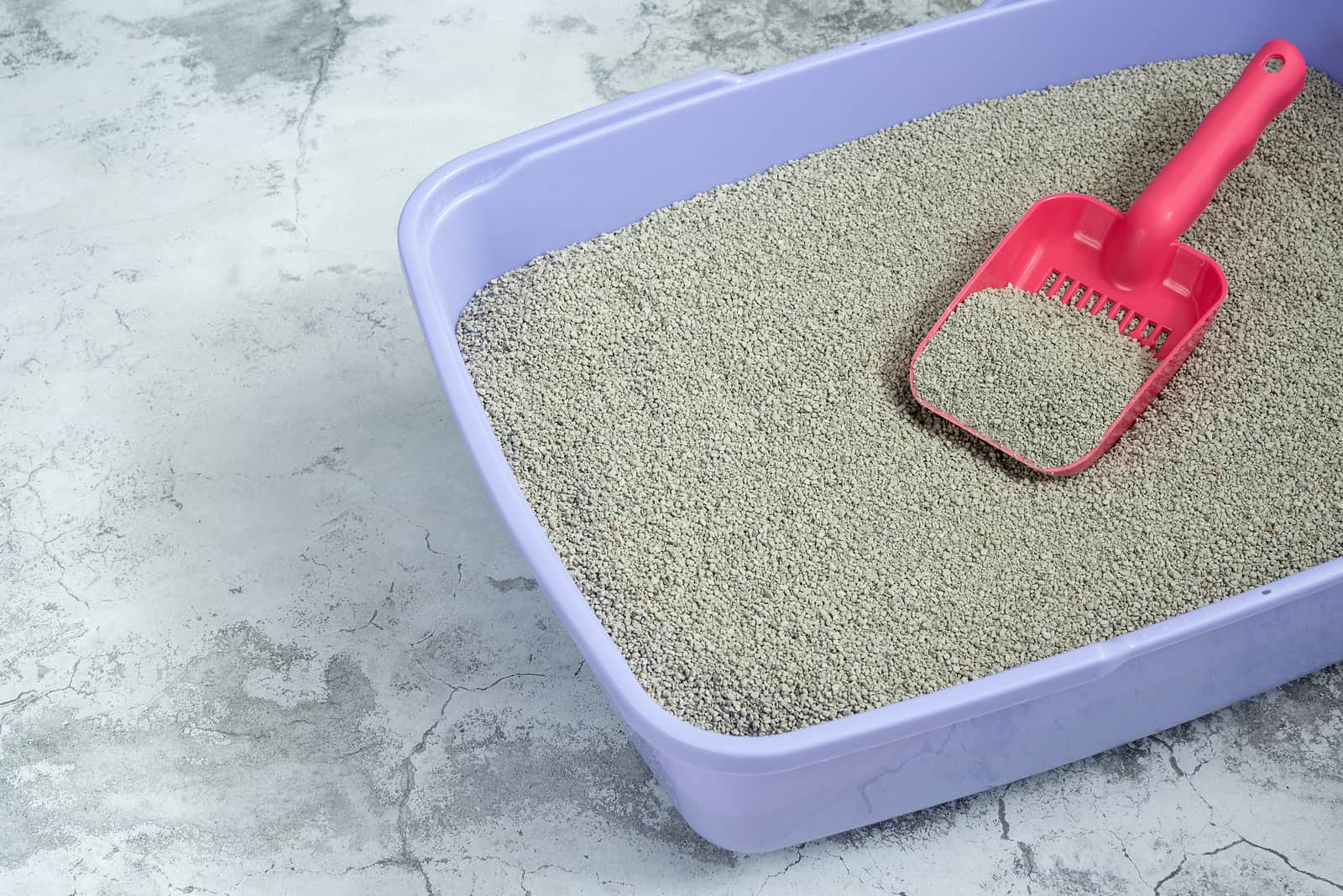
While these little bugs are drawn to pleasant and fruity aromas, your cat’s litter box is equally enticing. A fungus gnat is the most prevalent form of gnat to infest the litter box. These are the same insects that prefer to gather around houseplants.
They are mostly drawn to the waste in the litter. Bugs appreciate both urine and excrement as food sources. Gnats frequently dig into cat feces to feed on the nutrients they require to thrive.
They then emerge, giving the impression of having “hatched” from the cat poop. Sometimes the problem is the litter itself. Ingredients such as maize or wheat are frequently used in litter types consisting of vegetable matter.
Even organic waste, such as coconut shavings or pine needles, may attract gnats due to their nutritional value. Gnats may lay eggs in the litter box, and a messy litter box’s moist and warm environment is an ideal breeding ground.
The larvae will emerge in a matter of days, rendering your cat’s bathroom unusable until you get rid of them. It doesn’t take long before you have a swarm of pesky gnats living in the litter box. If you reside in a warm, humid climate, the problem might get worse!
See also: Help! My Cat Has Worms How Do I Clean My House
Final Thoughts
I hope that these tips and tricks will be helpful to you and that you’ll get rid of those horrible gnats in the litter box.
I’ve let you in on some helpful tricks that I’ve used in the past and explained what I do whenever there’s a gnat problem in my cats’ litter boxes.
Besides being effective and cheap, I believe that most of these are easy solutions that anyone can try! Good luck!

